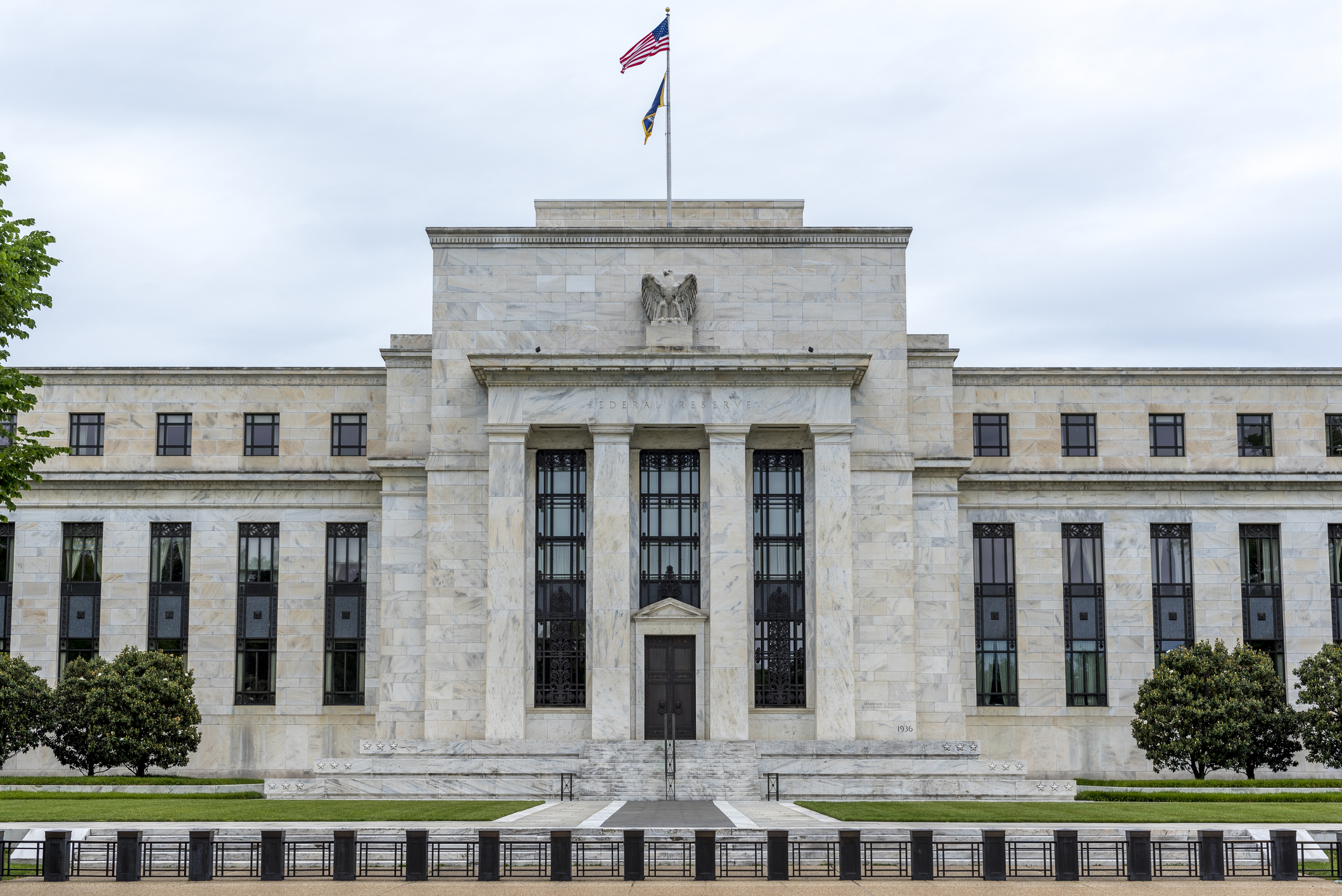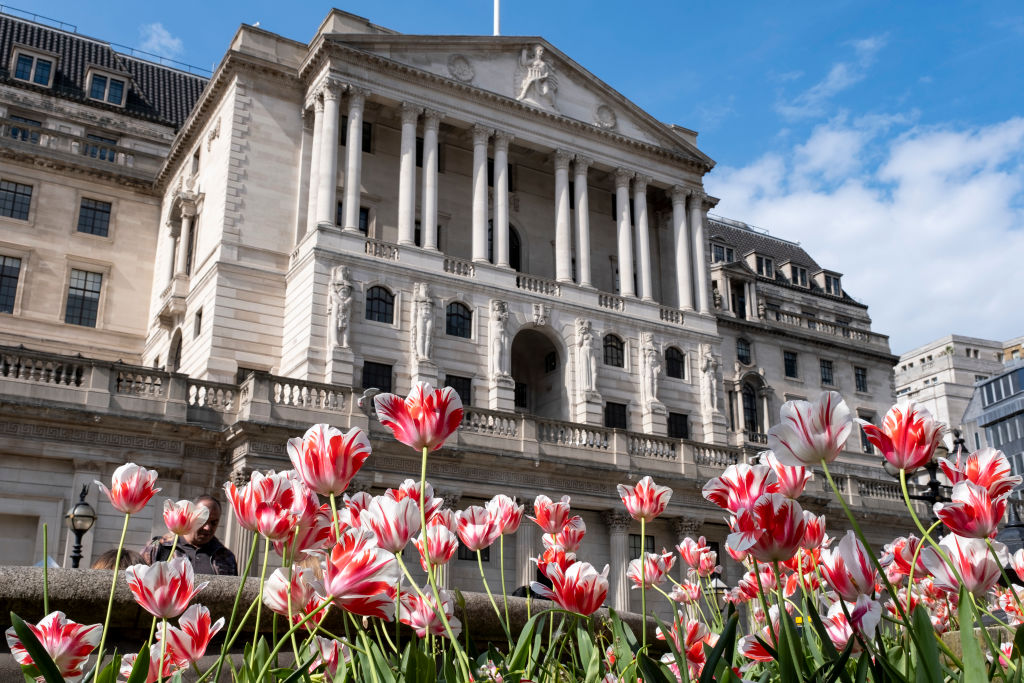Central banks are on course for recession
The world’s central banks have found themselves behind the curve on inflation. Acting to tame it now runs the risk of sparking a recession.

“The central-banking playbook of the 2010s is failing,” says The Economist. Policymaking that was designed for an era of low global inflation is leaving central banks “slow on their feet” and behind the curve on inflation. Now they are racing to catch up. Last week, America’s Federal Reserve raised interest rates by 0.75%, the biggest hike since 1994. The Fed wants investors to believe it will act decisively to tame inflation, “yet it is loath to admit that doing so will probably require a recession”.
The historical record is not encouraging, agrees Jon Sindreu in The Wall Street Journal. “‘Soft landings’ are easier to find in the legendarium of central banks than in historical reality.” Of the 12 times since the 1950s that the Fed has embarked on a major tightening cycle, “nine ended with a recession… The BOE [Bank of England] has a better record, but roughly half of its rate-increase campaigns since the 1950s still ended with a UK recession”. For tighter monetary policy to have any effect on inflation it needs to mean pricier credit or lower asset prices. “That this can happen without affecting anyone’s ‘real’ material conditions is wishful textbook thinking.”
The sell-off widens
Asset prices are certainly slumping. Both the S&P 500 and the tech-heavy Nasdaq index have lost ground in ten of the past 11 weeks. The S&P 500 suffered its worst week since March 2020 last week, plunging 5.8%, and is down 22% so far this year in total return terms. That puts it on track for its worst first-half performance since 1932, says Jim Reid of Deutsche Bank. Bonds, a traditional safe-haven, have offered no respite either, since ten-year Treasuries are currently on track for their worst first half since 1788.
MoneyWeek
Subscribe to MoneyWeek today and get your first six magazine issues absolutely FREE

Sign up to Money Morning
Don't miss the latest investment and personal finances news, market analysis, plus money-saving tips with our free twice-daily newsletter
Don't miss the latest investment and personal finances news, market analysis, plus money-saving tips with our free twice-daily newsletter
Talk of a coming recession has also started to weigh on commodity markets, says Randall Forsyth in Barron’s. Nearby crude-oil futures ended the week at $109.56 a barrel, down 9.21%. Meanwhile, copper, the most “economically sensitive commodity”, has fallen by 18.5% since it reached a high in March.
The Bank of England bottles it
While the Fed resorts to “shock and awe” tactics to tame inflation, the Bank of England is “playing a game of slowly, slowly”, says Laith Khalaf of AJ Bell. The day after the Fed’s three-quarter point interest-rate rise, the Bank’s monetary policy committee (MPC) followed with a far more cautious 0.25 percentage-point rise of its own, taking UK interest rates to 1.25%. Such “an incremental strategy allows the rate-setting committee to observe more data as it comes in, and fine-tune its approach as circumstances dictate”.
The modest increase was typical of the “head-in-the-sand behaviour that has cost the Bank of England so much of its inflation-fighting credibility”, says Liam Halligan in The Daily Telegraph. Tweaking rates is hardly an adequate response when annual inflation is running at more than four times the 2% target and the Bank itself expects CPI inflation to peak at 11% this autumn. “The MPC needs to demonstrate that it… can beat inflation – before its independence is taken away.”
Japan bucks the tightening trend
The Bank of Japan (BOJ) has its printer “on overdrive”, says George Saravelos of Deutsche Bank. While other global central banks tighten policy, Japan is resisting pressure from markets to follow suit. At the current pace, it’s on course to buy ¥10trn in government bonds this month. Relative to GDP, that equates to the US Fed buying $300bn of bonds per month; in reality the Fed bought $120bn per month last year. Is the BOJ so determined to generate inflation that it is “willing to absorb the entirety of the Japanese government bond stock?”
The BOJ’s decision to buck the global tightening trend has sent the yen down 16% against the dollar so far in 2022, to its lowest level in 24 years. Investors are sceptical about Japan’s ability to keep money easy for much longer, says Reshma Kapadia in Barron’s. Japan’s “decades long battle with deflation” explains the BOJ’s reluctance to recognise the new danger. Inflation remains low for now – at 2.5% – but a weak yen makes imports expensive, which is a severe concern for a major energy and food importer. Meanwhile, the ageing population relies on fixed income. “Inflation is kryptonite to those assets.”
Traders who think the BOJ will be forced to tighten policy have been shorting ten-year Japanese government bonds (JGBs), sending yields towards the 0.25% cap that the bank targets. Betting against the BOJ is a dangerous play, so dangerous in fact that it is “known in bond markets as the widowmaker trade”, say Anna Hirtenstein and Julie Steinberg in The Wall Street Journal. Yet with inflation stirring, some believe that this time is different. “I don’t really see how they can hold this. We are positioned for them ultimately having to move to a different policy,” says John Roe of Legal & General. “A surprise BOJ move could trigger substantial turbulence in global markets
Get the latest financial news, insights and expert analysis from our award-winning MoneyWeek team, to help you understand what really matters when it comes to your finances.
Alex is an investment writer who has been contributing to MoneyWeek since 2015. He has been the magazine’s markets editor since 2019.
Alex has a passion for demystifying the often arcane world of finance for a general readership. While financial media tends to focus compulsively on the latest trend, the best opportunities can lie forgotten elsewhere.
He is especially interested in European equities – where his fluent French helps him to cover the continent’s largest bourse – and emerging markets, where his experience living in Beijing, and conversational Chinese, prove useful.
Hailing from Leeds, he studied Philosophy, Politics and Economics at the University of Oxford. He also holds a Master of Public Health from the University of Manchester.
-
 The most influential people of 2025
The most influential people of 2025Here are the most influential people of 2025, from New York's mayor-elect Zohran Mamdani to Japan’s Iron Lady Sanae Takaichi
-
 Millions of parents are missing out on up to £720 a year in extra pension cash – are you affected?
Millions of parents are missing out on up to £720 a year in extra pension cash – are you affected?A mum who narrowly missed out on the pension boost said she “never knew the government rule existed” and wants other parents to use it
-
 Why Scotland's proposed government bonds are a terrible investment
Why Scotland's proposed government bonds are a terrible investmentOpinion Politicians in Scotland pushing for “kilts” think it will strengthen the case for independence and boost financial credibility. It's more likely to backfire
-
 How have central banks evolved in the last century – and are they still fit for purpose?
How have central banks evolved in the last century – and are they still fit for purpose?The rise to power and dominance of the central banks has been a key theme in MoneyWeek in its 25 years. Has their rule been benign?
-
 UK to have highest inflation among advanced economies this year and next, says IMF
UK to have highest inflation among advanced economies this year and next, says IMFThe International Monetary Fund (IMF) says it expects inflation to remain high in the UK, while lowering economic growth forecasts for 2026.
-
 Is Britain heading for a big debt crisis?
Is Britain heading for a big debt crisis?Opinion Things are not yet as bad as some reports have claimed. But they sure aren’t rosy either, says Julian Jessop
-
 'Britain is on the road to nowhere under Labour'
'Britain is on the road to nowhere under Labour'Opinion Britain's economy will shake off its torpor and grow robustly, but not under Keir Starmer's leadership, says Max King
-
 'Governments are launching an assault on the independence of central banks'
'Governments are launching an assault on the independence of central banks'Opinion Say goodbye to the era of central bank orthodoxy and hello to the new era of central bank dependency, says Jeremy McKeown
-
 Why investors can no longer trust traditional statistical indicators
Why investors can no longer trust traditional statistical indicatorsOpinion The statistical indicators and data investors have relied on for decades are no longer fit for purpose. It's time to move on, says Helen Thomas
-
 Live: Bank of England holds UK interest rates at 4.5%
Live: Bank of England holds UK interest rates at 4.5%The Bank of England voted to hold UK interest rates at their current level of 4.5% in March, as widely anticipated, after inflation rose to 3% in January